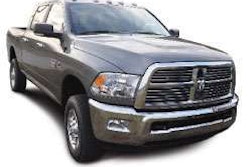
By Max Heine, [email protected]
I feel sorry for the regulators who spent countless on-duty, non-driving hours producing the new hours of service rule. They must know better than anyone how hard it is to satisfy all constituencies, confront their endless lawsuits, accommodate the schedules of highly diverse trucking operations, and account for individuals’ varied sleep patterns. Not to mention improve safety, too.
Our coverage by Senior Editor Todd Dills (Page 20) points out a few examples of the regulators’ challenge – hard cases that don’t seem to be addressed by the new rule, interpretations that are difficult, if not impossible, to find. No doubt there are more.
 Drivers better feel like working when the rule says it’s time to work, and they better be tired when the rule says it’s time
Drivers better feel like working when the rule says it’s time to work, and they better be tired when the rule says it’s timeThe ability of electronic onboard recorders to handle such odd scenarios and to accurately incorporate all the new changes could accelerate their adoption. However, even if they go a long way toward keeping logs legit, EOBRs won’t fix all problems with a one-size-fits-all rule that micromanages driver schedules.
Ideally, drivers should work when they’re rested and rest when they’re tired. Instead, they better feel like working when the rule says it’s time to work, and they better be tired when the rule says it’s time to rest.
When feds are telling professional drivers not to drive a minute over eight hours without stopping for a 30-minute break, or putting odd timing restrictions on a break that lasts 34 hours, it resembles instructions to kindergarten students from a teacher who’s lost control of the class.
Perhaps regulators need to produce a simpler hours rule, and balance that change with enforcement based on safety data. Carriers who push drivers too much on hours or who otherwise don’t manage them responsibly get shut down. Drivers with bad safety records lose their CDLs. The safety data is more available than ever, thanks to the Compliance, Safety, Accountability program, which already aims to toss out the industry’s bad apples.
Another route might be to offer alternative regs to encourage alternative compensation models, such as paying hourly. Or to offer carriers and drivers scheduling flexibility that increases in proportion to safety records. If an owner-operator has been a model of safety for more than 20 years, could he not be trusted to manage his own rest needs?
Indeed, there are flaws in those approaches. It would require a lot to work through them. But the system needs something that restores freedom to those who make the free market tick, and quickly removes those who would sacrifice safety to rape the free market.
With the deeper incursions into driver scheduling that have accompanied new versions of the rule, conflicts with operational realities and individual rest cycles become more glaring. It’s time for steps in another direction.









